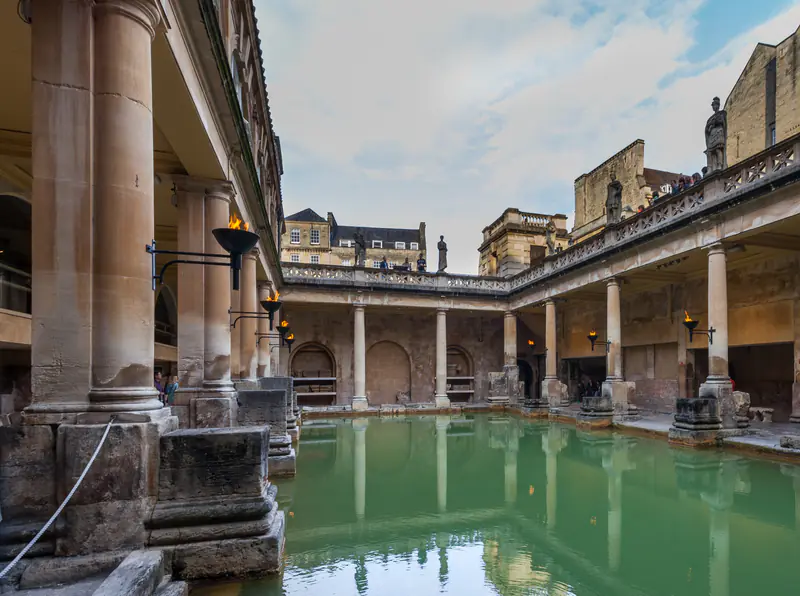UNESCO World Heritage Sites in Austria
Heritage Overview
Austria's UNESCO World Heritage sites represent centuries of imperial grandeur, musical heritage, and distinctive cultural landscapes shaped by Alpine geography and Habsburg rule. The country preserves exceptional examples of Baroque architecture, historic urban centres, and cultural traditions that influenced European arts, music, and intellectual development throughout multiple historical periods. Imperial palaces, historic city centres, and architectural ensembles demonstrate the wealth and cultural ambitions of one of Europe's most powerful dynasties. These sites showcase exceptional artistic achievement across multiple periods, from medieval foundations through Baroque splendour to late imperial modifications. The architectural heritage reflects Austria's central role in European political and cultural networks spanning centuries. Cultural landscapes illustrate distinctive regional traditions and human adaptation to Alpine environments, featuring prehistoric lake dwellings, ancient salt mining operations, and traditional rural settlements. Railway engineering achievements demonstrate technological innovation in challenging mountainous terrain. Together, these sites reveal Austria's evolution from Celtic settlements through Roman occupation to medieval duchies and eventual imperial power, whilst preserving traditions of music, arts, and architecture that continue defining Austrian cultural identity and European heritage.
Essential Information
Visa Requirements
Austria is part of the European Union and Schengen Area, allowing EU, EEA, and Swiss citizens free entry with valid identification. Visitors from many countries including the United States, Canada, Australia, Japan, and New Zealand can stay up to 90 days within 180 days without visas. From 2026, travellers from visa-exempt countries require ETIAS (European Travel Information and Authorisation System) authorisation before arrival, valid for three years at €7. Other nationalities should verify requirements with Austrian embassies. Passports must remain valid for at least three months beyond intended departure from the Schengen Area.
Currency
The official currency is the Euro (EUR), adopted in 2002 following the Austrian Schilling. Credit and debit cards (Visa, Mastercard, Maestro) are widely accepted in hotels, restaurants, shops, and tourist attractions, with chip-and-PIN systems standard throughout Austria. Contactless payments are increasingly common. ATMs are abundant in cities and towns, typically without withdrawal fees for Eurozone cards but charging €2-5 for foreign cards. Cash remains important for smaller establishments, markets, mountain huts, and rural areas. Some traditional businesses prefer cash. Tipping is customary by rounding up bills or adding 5-10%. Currency exchange is available at airports, banks, and exchange offices.
Language
The official language is German, spoken with distinctive Austrian dialects varying significantly between regions. Austrian German differs from standard German in vocabulary, pronunciation, and expressions. English proficiency is high, with over 70% of Austrians speaking some English, particularly younger generations and tourism professionals. English is widely spoken in Vienna, Salzburg, Innsbruck, and tourist areas. German is taught as the primary language, with English compulsory in schools. Signage in tourist areas typically includes English translations. Menus and public transport information often appear bilingually. Learning basic German phrases (Grüß Gott for hello, Danke for thank you) is appreciated and enhances interactions.
Climate
Austria experiences a continental Alpine climate with four distinct seasons and significant regional variations. Summers (June-August) are warm with temperatures typically 20-30°C in lowlands, cooler in mountains. Winters (December-February) bring cold temperatures averaging -5 to 5°C, with reliable snowfall in Alpine regions creating excellent skiing conditions. Spring (March-May) and autumn (September-November) offer mild temperatures and fewer tourists, ideal for cultural tourism. Western Alpine regions receive more precipitation year-round. Vienna and eastern lowlands experience more extreme temperature ranges. The best periods for heritage visits are late spring through early autumn (May-September), offering pleasant weather.
